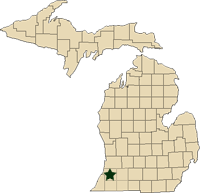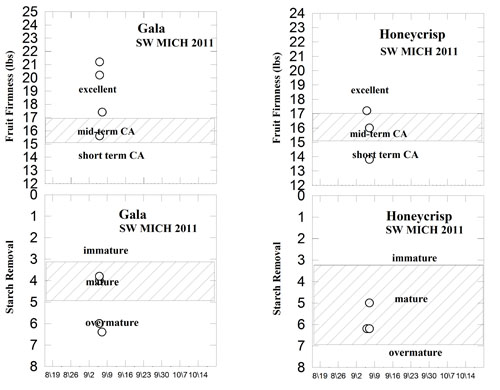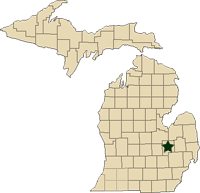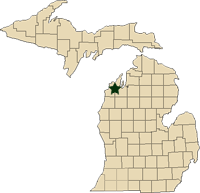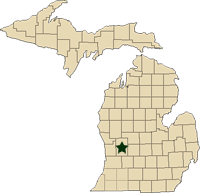Michigan apple maturity reports – September 7, 2011
Each week, MSU Extension educators test apples for maturity in their region and report the status.
This week’s regional reports:
- Southwest Michigan - Mark Longstroth, Bill Shane, Diane Brown-Rytlewski
- Southeast Michigan - Bob Tritten and Debbie Clark
- Northwest Michigan - Nikki Rothwell
- Grand Rapids Area - Phil Schwallier, Amy Irish-Brown, Denise Ruwersma
Southwest Michigan – Bill Shane, Mark Longstroth, Diane Brown Michigan State University Extension
|
This is the first of weekly apple maturity reports for southwest Michigan from now until mid-October. The samples for these reports are collected primarily in Berrien and Van Buren counties – the maturity is only a broad indication of trends for this area. Contact Bill Shane at the Southwest Michigan Research and Extension Center (SWMREC) at 269-944-1477 ext. 205 if you would like to have samples from your farm tested for maturity. See the Michigan State University apple website (apples.msu.edu) for more information, including reports from other regions, past season reports, and much more information about apple maturity and apples in general.
General comments
The most important factor that should drive harvest decisions is fruit firmness. If fruit are firm, regardless of the starch, skin color, and brix levels, harvest can be delayed. If fruit firmness is dropping toward the dividing line between excellent long-term and midterm controlled atmosphere levels, scheduling harvest should be the upmost thought on the growers mind.
The grower should be clear on how the fruit will be stored and sold. Starch conversion gives an indication of apple maturation, but often is an indication of the ongoing temperatures, and not necessarily drives the harvest timing decision. Warm temperatures, especially nighttime temperatures in the last weeks before harvest, can cause depletion of the starch that the iodine solution turns blue. Increased internal ethylene content as measured in a laboratory, conversion of skin background to a ripe color, and a ripe taste and smell are good indicators of fruit maturation and are more reliable than the starch conversion index or brix.
Table 1. Summary of Berrien County area apple maturity samples taken September 6 and 7, 2011.
|
Variety |
Firmness lbs pressure (range) |
Starch (range) |
Brix (range) |
|
Gala |
18.6 (15.6 – 21.2) |
5.0 (3.8 – 6.4) |
13.3 (12.5 – 14.2) |
|
Honeycrisp |
15.7 (13.8 – 17.2) |
5.8 (5.0 – 6.2) |
13.4 (12.3 – 14.3) |
Gala (four sample sites)
Varieties in these samples are mid-season types. Fulford Gala harvests a few days earlier than those in these samples. Firmness mainly testing above 17 lbs. in the excellent range, one site in the mid-term range controlled atmosphere category. Starch conversion or removal readings are testing mature to over-mature. Brix are averaging 13.3 degrees. Background color is relatively good, with the green hue nearly gone. No skin cracking was detected. The samples picked for these tests were the riper fruit on the trees, those that would be removed in the first picking. The general predicted peak harvest date by MSU for Berrien County this year was September 8, which seems to be in general agreement with the results. Harvesting is justified in some area blocks.
Honeycrisp (three sites sampled)
Blush on some sites is bright, striped red, although background color is generally relatively green. Quite a range of bitter pit and lenticel spot disorders in some sites, with secondary fungi moving in, especially where plant bug feeding has occurred. Fruit firmness is averaging 15.7 lbs., ranging from the excellent down to the short-term controlled atmosphere storage category. Starch conversion or removal is quite advanced, with an average of 5.8, all in the mature range. Brix is averaging 13.4 degrees. The samples picked for these tests were the riper fruit on the trees, those that would be removed in the first picking. Fruit deeper in the canopy and on trees with heavier crops and on sites with heavier soils will be behind the tests shown here. The generalized predicted harvest date for Honeycrisp for Berrien County for 2011 is September 17, with the long-term normal date of September 16. So, Honeycrisp is moving ahead of the 2011 prediction and about five days ahead of normal. First skim harvest is underway in some area orchards.
This report and project is made possible by the support of our sponsors, which include Valent Biosciences, Michigan Apple Committee, Michigan State Horticultural Society, MSU’s AgBioResearch and Michigan State University Extension. Southwest Michigan growers providing apples include Grandview Orchards, Mammoth Farms, Oak Hill, Bixby Orchards, Weber Farms, Meachum Farms, Kevin Winkel Farms, Weckwerth Farms, Willmeng Farms, and Czuba Farms.
Table 2. Normal peak harvest dates and predicted 2011 apple harvest dates for varieties for the Grand
Rapids and Benton Harbor areas.
|
Variety |
Normal date |
Normal date Benton Harbor |
2011predicted |
2011 predicted date for Benton Harbor |
|
Paula Red |
8/24 |
8/22 |
8/26 |
8/22 |
|
Gingergold |
8/26 |
8/24 |
8/28 |
8/24 |
|
Gala |
9/10 |
9/8 |
9/12 |
9/8 |
|
McIntosh |
9/14 |
9/12 |
9/16 |
9/12 |
|
Honeycrisp |
9/18 |
9/16 |
9/20 |
9/17 |
|
Empire |
9/22 |
9/20 |
9/24 |
9/21 |
|
Jonathan |
9/26 |
9/26 |
9/29 |
9/26 |
|
Jonagold |
9/28 |
9/26 |
9/30 |
9/27 |
|
Golden Delicious |
10/2 |
9/31 |
10/4 |
10/1 |
|
Red Delicious |
10/4 |
10/2 |
10/6 |
10/2 |
|
Idared |
10/10 |
10/8 |
10/12 |
10/9 |
|
Rome |
10/15 |
10/13 |
10/17 |
10/14 |
|
Fuji |
10/25 |
10/23 |
10/27 |
10/23 |
|
Braeburn |
10/25 |
10/23 |
10/27 |
10/23 |
|
Goldrush |
11/1 |
10/30 |
11/3 |
10/30 |
Apple maturity trends for southwest Michigan for 2011. Each dot is the average for an
orchard based on a 10-apple sample. Samples were taken in Berrien and Van Buren counties.
Click here to see larger image.
Southeast Michigan – Bob Tritten and Debbie Clark, Michigan State University Extension
|
We are pleased to provide you with the first southeast Michigan apple harvest report for the 2011 apple harvest. I will be emailing these reports as well as posting them at MSU Extension News for Agriculture each Wednesday throughout the harvest season. The report that follows will be in a format that is similar to last year’s. If you ever have any suggestions to make it more clear or usable, don’t hesitate to contact me.
The report consists of three sections, with the first being an overview on where folks are at with apple harvest, the second is a table that lists on the details from this week’s apple testing, and the third is detailed information about the maturity of each variety tested.
Hopefully you will find this report to be timely as you move through the harvest season. Here is how this report is put together. Each Monday I visit five to eight orchards in east Michigan collecting apple samples. The same day I deliver these samples to the post-harvest laboratory in the Department of Horticulture at MSU, where Randy Beaudry and his students conduct a series of tests starting that afternoon and running through Tuesday. The data that is generated is emailed to me on Tuesday evening, and then I begin to analyze the data very early Wednesday morning. My fruit colleagues and I have an 8:00 a.m. conference call on Wednesday mornings and then I share this information with growers by noontime each Wednesday.
Besides this report being emailed to you each Wednesday, it will also be posted on our new MSU Extension News for Agriculture website. This same website also has information from other apple growing areas of the state, as well as previous week’s reports.
Lastly, I would like to offer a special word of thanks to four fruit farms that allow me to harvest samples on their farm each Monday throughout the fall. The farms that are cooperating this season are Spicer Orchards in Hartland, Erwin Orchards in South Lyon, Westview Orchards in Romeo and Hy’s Orchard and Cider Mill in Romeo. I also visit several orchards throughout the apple harvest window that supply fruit for testing. Without the assistance of all these fine folks, the data and more importantly the information that is contained in this report would be very difficult to obtain each week.
General comments
The predicted apple harvest dates were emailed as part of my Fruit Crop Update Report earlier this summer. Later in the summer I also provided some revised dates as a result of all of the heat that we had this growing season. Out of the almost 30 apple harvest seasons that I have observed, this one is one of the most difficult to predict harvest dates accurately. With this information that I share with you today (September 7), which is only one week’s worth of data, I have a bit of a better sense of where apple harvest is, but it will take another week or so to begin to sort things out.
I would say that our season is now back to normal in terms of harvest dates. Additionally, I predict that with the strange weather of this growing season, varieties will not be maturing in the same order as what they normally are. So pay close attention to this report each week to make adjustments in your harvest sequence and scheduling.
Overall, I keep hearing from growers that apples are further along than what we had predicted in the apple harvest dates. Based on my observations over the last couple weeks in sampling many varieties, as well as looking at the data that follows in today’s report, I would concur with their opinion.
Varieties sampled this week include Gala, McIntosh and Honeycrisp. Several growers have started harvesting early strains of Gala. In most warm summers, Gala matures ahead of McIntosh, other years it’s just the opposite. Galas are producing a great deal of ethylene, which is an indication of them reaching maturity, however the starch index on some strains is still low enough that they are not quite ready for harvest. McIntosh’s are still eating a bit green and have very low brix at this time, but they are quickly approaching the maturity window. Honeycrisp is showing poor background color and, with a starch of 2.5 and a brix of 12.9 percent, are showing that they are further ahead and may be ready for harvest within in a week or so for the first picking
Table 1. Apple maturity at a glance.
|
Variety |
Color (Range) |
Background Color (1-5) |
Firmness (Range) |
Starch (Range) |
Brix |
|
Gala |
71% (53-82%) |
1.0 (1.0-1.0) |
15.0 lbs (14.1-16.3) |
2.4 (1.0-5.5) |
12.2% |
|
McIntosh |
58% (50-68%) |
4.1 (4.0-4.2) |
13.5 lbs (12.6-14.8) |
3.2 (2.0-4.8) |
10.9% |
|
Honeycrisp |
35% (14-53%) |
3.2 (2.4-3.8) |
14.2 lbs (13.8-14.7) |
2.5 (1.0-5.1) |
12.9% |
Individual variety results
Gala were also sampled for the first time of the apple harvest season. There is a lot of ethylene developing in fruit, with 90 percent of apples showing greater than 0.2 parts per million (ppm) of internal ethylene. The color is fairly good at 71 percent, background color of 1.0 and a pressure of 15.0 lbs. Starch removal was lower than I expected at 2.4 and the brix at 12.2 percent. Early strains of Gala are being harvested now and others will be ready in the next few days.
McIntosh were sampled for the first time of the season. There was a fair amount of internal ethylene developing in McIntosh, now testing at 40 percent greater than 0.2 ppm. The color is still low at 58 percent, with a background of 4.1. The firmness was a surprisingly low 13.5 lbs. averaged over all samples and the starch a surprisingly high at 3.2. The brix tested very low in several samples, with an average of 10.9 percent.
Several growers have attempted to pick a few Mac’s for early fresh sales, but stopped fairly quickly because color was so poor and because they have a bit of a starchy taste and very low sugar. My suggestion is that we are still about a week or so away from McIntosh harvest, but stay tuned for updates in next week’s report.
Honeycrisp were sampled for the first time of the apple harvest season as well. We had a fair amount of internal ethylene in Honeycrisp, this week testing at 60 percent greater than 0.2 ppm. Color is still very poor on Honeycrisp, with color only at 35 percent. The background color is still green at 3.2, with firmness testing at 14.2 lbs., which was much lower than I expected. The starch is 2.5 and a brix of 12.9 percent.
Honeycrisp are not ready for harvest, and I would estimate that a week from now we will be harvesting a fair amount of Honeycrisp. Here again stay tuned for details.
Table 2. Predicted harvest dates.
|
Full bloom date |
Original Predicted Harvest Dates |
Revised Predicted Harvest Dates |
|||||||
|
Station |
McIntosh |
Jons |
Reds |
McIntosh |
Jons |
Reds |
McIntosh |
Jons |
Reds |
|
Deerfield |
5/13 |
5/15 |
5/17 |
9/15 |
9/29 |
10/5 |
9/20 |
10/4 |
10/10 |
|
Romeo |
5/19 |
5/21 |
5/21 |
9/17 |
10/2 |
10/8 |
9/22 |
10/7 |
10/13 |
If you have any questions regarding this apple maturity report or apple harvest in southeast Michigan, don’t hesitate to email me or call my office (810-244-8555) or my cell (810-516-3800).
Northwest Michigan – Nikki Rothwell, Michigan State University Extension
|
General comments
The Northwest Michigan Horticultural Research Station (NWMHRS) will be testing apples for maturity for 2011, and results will be sent via fax and email to past apple maturity list subscribers. Results will also be available at MSU Extension News for Agriculture and the NWMHRS Apple Maturity Report website. Reports for other regions around the state can be viewed at the MSU Extension News for Agriculture site.
If growers are interested in having fruit tested, they should drop off a 10 to 12 apple samples at the NWMHRS on Mondays. Fruit should be picked randomly from the outside portion of the trees and should be large in size and free of blemishes with the stem attached.
With the lack of rainfall in July and August, fruit size is smaller than in past years. Color has not developed in most varieties, and we are hoping for cool evenings and sunny days to help with coloring and maturation.
Summary of northwest Michigan apple maturity samples taken on September 6, 2011
|
Variety |
Color % (range) |
Firmness lbs. pressure (range) |
Starch (range) |
Brix (range) |
|
Gingergold |
19.3 (14.5-23.5) |
18 (16.2-20.1) |
3.2 (2-5) |
11.4 (10.7-11.9) |
|
Gala |
67.5 |
22.1 |
10.8 |
10.8 |
|
McIntosh |
80.5 |
19 |
10.2 |
10.2 |
|
Honeycrisp |
52.1 (48.6-55.5) |
18.5 (17.3-19.6) |
11.2 (10.3-12) |
11.2 (10.3-12) |
Paula Reds. None tested, should be mature. Much of this variety was harvested around September 1, and color was decent for most growers.
Gingergold.Nearing mature (three samples). Firmness at 18.0 lbs. Starch index at 3.2. Harvest has begun in the area. Background color should just be starting to turn yellowish at the time of harvest. Fruit that ripens to the point of full yellow will not hold up well in storage. There have been reports of early Gingergold harvest, and there are starchy apples on the market.
McIntosh.Immature (one sample). Firmness at about 19.0 lbs. Starch index at 2.5. Brix level at 10.2. Color is at 80 percent.
Honeycrisp.Immature (two samples). Firmness at about 18.5 lbs. Starch index at 1.8. Brix level at 11.2. Color is at 52 percent. This variety needs multiple pickings over several weeks for premium quality fruit. Watch for first two to three apples per tree to color for the first picking. Honey Crisp color is not optimal at this time.
Gala. Immature (one sample). Firmness at 22.1 lbs. Starch index is at 1.0 and brix levels are at 10.8. Color is nearing 70 percent. Gala size is small, particularly on heavily cropped trees.
Grand Rapids Area - Phil Schwallier, Amy Irish-Brown, Denis Ruwersma, Michigan State University Extension
|
General comments
In the Grand Rapids area, apple maturity seems to be running a little out of sync with the predicted harvest dates. Some Gala strains are at or ahead of the original predicted harvest dates listed below, while McIntosh seem to be maturing later than the original predicted harvest dates. We are noticing that so far, apples seem to have more ethylene expression this year.
Until we get samples from the Hart and Shelby area, growers can expect harvest dates for that area to be behind the Grand Rapids area using this guide: along the lakeshore, approximately six days behind Grand Rapids; areas inland, about four days behind; and add another two days behind for those blocks with a very heavy crop.
Historical predicted-harvest dates for Grand Rapids, Mich.
|
Variety |
Normal date |
2011 |
2010 |
2009 |
2008 |
2007 |
|
Paulared |
24-Aug |
26-Aug |
24-Aug |
31-Aug |
24-Aug |
14-Aug |
|
Gingergold |
26-Aug |
28-Aug |
26-Aug |
2-Sep |
26-Aug |
14-Aug |
|
Gala |
10-Sep |
12-Sep |
29-Aug |
17-Sep |
11-Sep |
28-Aug |
|
McIntosh |
15-Sep |
16-Sep |
2-Sep |
22-Sep |
14-Sep |
1-Sep |
|
Honeycrisp |
18-Sep |
20-Sep |
6-Sep |
25-Sep |
18-sep |
4-Sep |
|
Empire |
22-Sep |
24-Sep |
10-Sep |
29-Sep |
21-Sep |
8-Sep |
|
Jonathan |
28-Sep |
29-Sep |
16-Sep |
5-Oct |
27-Sep |
19-Sep |
|
Jonagold |
28-Sep |
30-Sep |
16-Sep |
5-Oct |
27-Sep |
19-Sep |
|
Golden Delicious |
2-Oct |
4-Oct |
20-Sep |
9-Oct |
30-Sep |
21-Sep |
|
Red Delicious |
5-Oct |
6-Oct |
22-Sep |
12-Oct |
3-Oct |
26-Sep |
|
Idared |
10-Oct |
12-Oct |
28-Sep |
17-Oct |
9-Oct |
2-Oct |
|
Rome |
15-Oct |
17-Oct |
3-Oct |
22-Oct |
14-Oct |
7-Oct |
|
Fuji |
25-Oct |
27-Oct |
13-Oct |
1-Nov |
25-Oct |
18-Oct |
|
Braeburn |
25-Oct |
27-Oct |
13-Oct |
1-Nov |
25-Oct |
18-Oct |
|
Goldrush |
1-Nov |
3-Nov |
20-Oct |
8-Nov |
30-Oct |
22-Oct |
Summary of Grand Rapids apple maturity samples taken September 6, 2011.
|
Variety |
Avg. Ethylene (ppm) |
% Fruits with Ethylene over 0.2 ppm |
Color % (range) |
Firmness lbs pressure (range) |
Starch (range) |
Brix (range) |
|
Imperial Gala |
0.73 |
100% |
57% (40 - 80%) |
15.4 (12.2 - 18) |
1.7 (1 - 2) |
11.4 (11 - 12) |
|
Buckeye Gala |
1.34 |
80% |
89% (75 - 95%) |
15.1 (13.2 - 19.1) |
1.1 (1 - 2) |
16.2 (15 - 17) |
|
Blondee |
1.5 |
100% |
4% (0 - 5%) |
14 (11.5 - 18.5) |
2.1 (1 - 4) |
12.4 (11 - 14) |
|
Ruby Mac |
0.0112 |
0% |
3% (3 - 4%) |
12.3 (10.5 -14) |
2 |
12 |
|
Linda Mac |
0.0284 |
0% |
76% (50 - 90) |
13.7 (12.3 - 16.2) |
2 |
12.4 (12 - 13) |
|
Honeycrisp |
1.14 |
40% |
86.5% (75 - 95) |
14.1 (12.2 - 16.9) |
1 |
11.2 (11 - 12) |
Gala
Color is good on most Gala strains this year, but could use a little improvement. Gala are moving very quickly in their maturity and growers are advised to watch their individual blocks very carefully. Fulford Gala are in their optimum long-term storage harvest window right now. Buckeye Gala are not quite there, but perhaps by Friday (September 9) or over the weekend, they will move into that long-term storage window if not treated with Retain. Blondee maturity is similar to Buckeye Gala and are expected to be at optimum long-term CA condition by early next week.
McIntosh
They are not quite there yet in the general Grand Rapids area. Ethylene is lower than expected, with no fruits being over 0.2 ppm. Pressure readings are indicating low firmness at an average of 12 to 14 pounds of pressure. Color is excellent and improving every day. Brix reading is pretty good at 12 to 12.4, but they really don’t eat very well yet. Next week will be a big Mac harvest week around Grand Rapids. There is some drop occurring where fruits are pushing themselves off.
Honeycrisp
Honeycrisp are moving toward maturity, but still immature overall. There are some fruits that look ready, but don’t eat very well yet. There is some harvest of Honeycrisp occurring where hail was an issue and fruit are being picked for juice to avoid rot problems. Firmness readings are very good at 14.1 pounds pressure on average. Starch readings are very low and indicate immaturity. Brix level is still low at 11.2. Initial first picking of Honeycrisp for fresh sales is recommended for next week in the Grand Rapids area.
For next week’s sampling, we hope to add Empire, Jonagold and other Jonathan strains, and Golden Delicious to our report.



 Print
Print Email
Email